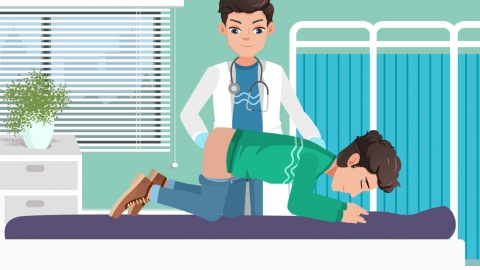How is anal fissure diagnosed?
Diagnosis of anal fissures is generally carried out through symptom inquiry, visual examination of the anus, digital rectal examination, anoscopy, and ruling out other diseases. The specific procedures are as follows:

1. Symptom Inquiry: The doctor will thoroughly ask about the patient's symptoms, including the nature of pain during bowel movements, duration of pain, presence of rectal bleeding, bowel habits, and history of constipation, to make a preliminary assessment of whether the symptoms match those typical of an anal fissure.
2. Visual Examination of the Anus: The patient will be positioned appropriately while the doctor examines the perianal skin for any signs of裂s, redness, swelling, discharge, or sentinel piles. In most cases of acute anal fissures, the location and appearance of the裂 can be directly observed.
3. Digital Rectal Examination: For atypical symptoms or suspected chronic anal fissures, the doctor may perform a digital rectal exam. This involves gently palpating the anal canal and lower rectum to check for tenderness or induration, assess the depth and extent of the fissure, and rule out other conditions such as perianal abscesses or hemorrhoids.
4. Anoscopy: If further evaluation of the severity of the fissure or exclusion of internal rectal pathology is needed, anoscopy may be performed. This allows clear visualization of the fissure site and associated findings such as enlarged anal papillae. The procedure is conducted gently to minimize discomfort and avoid worsening pain.
5. Ruling Out Other Diseases: Based on the above examinations, the doctor will exclude other conditions that may present with similar symptoms, such as hemorrhoids, perianal abscesses, or colorectal tumors, to prevent misdiagnosis and ensure appropriate treatment.
When symptoms suggestive of an anal fissure occur, patients should promptly visit the proctology department of a qualified medical institution, cooperate with the necessary diagnostic evaluations, follow medical advice for appropriate treatment upon diagnosis, and adjust their diet and bowel habits to promote recovery.




